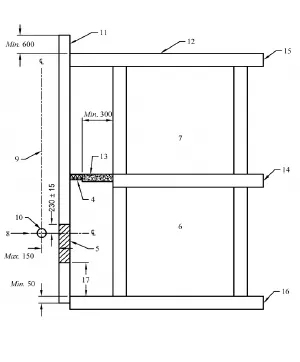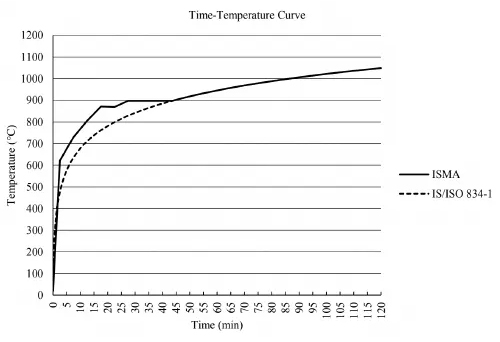Is your façade designed to contain the smoke and fire from spreading?
About The Author
Jothi Ramalingam Ponnuswamy is the director of Winwall India Façade Testing Laboratory and Afiti Global Fire Testing Laboratory. He has been associated with the architectural aluminium industry since 1990 as an anodising and powder coating specialist.
Winwall Technology India Pvt Ltd, an ISO 17025 and an NABL performance testing laboratory which also has the facility to test reaction to fire test asper NFPA285 and resistance to fire as per IS 18190 & ASTM 2307.
Under his stewardship, he has created new state of the art laboratory for reaction and resistance to fire tests. The laboratory is completely operational and waiting for its NABL accreditations. The facility is used for testing and research purposes. Currently Afiti has the test facility to test horizontal and vertical samples of various dimensions for its resistance to fire properties.
Ensuring Safety:Understanding IS 18190 - Fire Resistance for Perimeter Fire Barrier Joint System
Continuous glazing on almost all modern buildings is passe. The architect and developer of a high rise building always strive to design and build a unique looking structure which is not aesthetically pleasing to look at but also stands out and makes a statement. And while designing such iconic buildings one aspect that cannot be overlooked is fire resistance. As buildings become taller and more complex, ensuring fire safety measures are up to par becomes paramount.
The entire focus of the façade designer or consultant is to isolate the smoke and fire within one floor in the event of an unfortunate fire accident. Fire in a façade can spread to the upper floors from two different causes.
The fire can jump to the higher floors after some glass panels of the façade break due to extreme temperature rise from outside the building. This is called leap frogging.

The smoke and fire can rapidly rise through the gap available between the continuous façade and the concrete slab on each floor. This is due to the chimney effect.

To prevent the smoke and fire from spreading into the floors above the sealing of the continuous gap using a non-combustible material like stone wool is very critical. This product used to seal the gap is technically addressed as a perimeter fire barrier and is also called a smoke seal or fire stop.
One crucial component in this regard is the Perimeter Fire Barrier Joint System, governed by the Indian Standard IS 18190.
What is the significance of conducting an IS 18190 perimeter fire barrier test?
IS 18190 is the standard to test the fire resistance of the perimeter fire barrier joint system and its ability to prevent the smoke and fire from penetrating the barrier for 120 minutes. The test is conducted in an ISMA Chamber (Intermediate Scale Multi-Storey Apparatus) as shown in Figure 1. The fire curve for the first 30 minutes will follow the burning pattern specified as per the NFPA 285 standard (used to test the fire propagation properties of a façade system which uses semi combustible materials) and thereafter for the next 90 minutes follows the time temperature curve specified in IS-ISO 834-1 as shown in Figure - 2.
Figure – 1

Figure – 2

This standard specifies the test method to determine the fire resistance performance system of perimeter fire barrier joint systems based on the length of time the system is being tested to resist the fire before development of through openings or flaming and transmission of heat on the unexposed surface.
During the life cycle of the perimeter fire barrier joint system, it undergoes various unintended movements such as thermal, wind, seismic and/or combination of these. This standard addresses such movements before subjecting the system to a fire resistance test. The test simulates the dynamic movement of the barrier in three different speeds i.e. 1,10 and 30 cycles per minute for 500 cycles before the fire in the chamber is initiated.
The significance of IS 18190 testing for Perimeter Fire Barrier Joint Systems cannot be overstated, especially in high-rise buildings, commercial complexes, and public facilities. Here's why:
1. Life Safety: Testing the Perimeter Fire Barrier Joint Systems are integral to ensuring the safety of building occupants and first responders during a fire emergency. By containing the fire and limiting its spread, these systems buy valuable time for evacuation and rescue operations.
2. Property Protection: Beyond life safety, effective fire barrier systems help minimize property damage by confining the fire to its origin area. This reduces the overall impact of the fire and facilitates faster recovery and restoration post-incident.
3. Regulatory Compliance: Adherence to IS 18190 is a regulatory requirement for building design and construction. Compliance ensures that structures meet the necessary safety standards and codes mandated by local authorities.
4. Liability Mitigation: Non-compliance with fire safety regulations can have severe legal and financial consequences for building owners, developers, and stakeholders. Investing in robust fire barrier systems not only protects lives but also mitigates liability risks.
In conclusion, IS 18190 governing Perimeter Fire Barrier Joint Systems are indispensable tools in the arsenal of fire safety measures for modern buildings. By adhering to the standard, the construction industry can uphold its commitment to safeguarding lives, protecting property, and promoting resilience in the face of fire emergencies.
Winwall Technology India Pvt Ltd is an ISO 17025 NABL accredited laboratory in India since 2013. The brand Winwall is a very renowned name in the performance testing industry with over 30+ years of testing credibility and is present in 6 countries namely Singapore, Malaysia, Indonesia, Vietnam, Thailand and in India.
